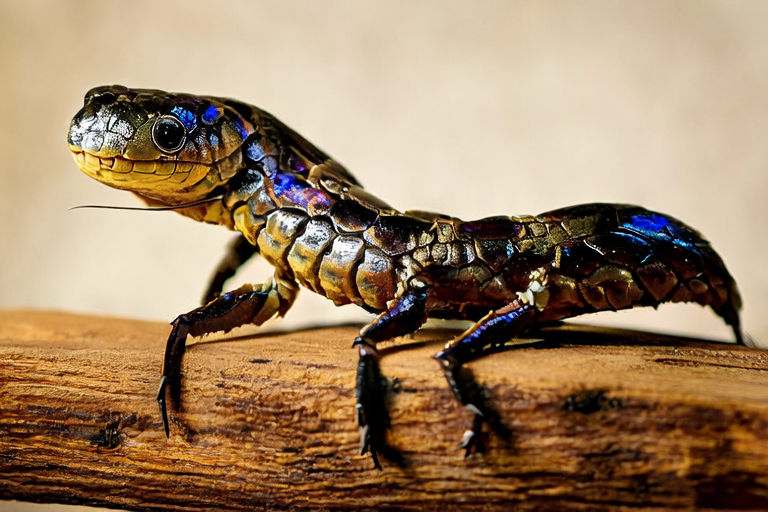A Comprehensive Guide to Caring for Heterometrus Spinifer (Asian Forest Scorpion)
Introduction
Heterometrus spinifer, commonly known as the Asian forest scorpion, is an intriguing and unique pet that can bring much joy to its owner. This guide will provide you with all the necessary information to ensure your scorpion has a healthy and happy life.
Biology
The Heterometrus spinifer belongs to the family Scorpionidae and is native to Southeast Asia. It is a large scorpion species, reaching lengths of up to 10 centimeters. Its body is covered in spines, giving it a distinctive appearance. The venom of this species is not considered highly dangerous to humans but should still be handled with care.
Setting Up the Ideal Living Environment
Creating a suitable habitat is crucial for the well-being of your scorpion. A glass or plastic enclosure measuring at least 30x30x40 cm is recommended. Ensure proper ventilation by drilling small holes in the lid and placing a fine mesh screen over them. Place a substrate layer of at least 10 cm deep, using coconut fiber or peat moss. Provide hiding spots such as cork bark, rocks, or artificial caves. Maintain humidity levels between 70-80% and temperatures ranging from 25-30°C. Use a hygrometer and thermometer to monitor these conditions accurately.
Dietary Requirements
Feeding your scorpion a balanced diet is essential for its health. Offer live insects such as crickets, mealworms, and dubia roaches weekly. Gut-load these feeder insects with nutritious food before feeding them to your scorpion. Avoid feeding wild-caught insects due to potential pesticide contamination. Ensure there is always fresh water available in a shallow dish.
Health Maintenance
Regular observation is key to maintaining your scorpion’s health. Look out for signs of illness, such as lethargy, loss of appetite, or abnormal behavior. Keep the enclosure clean by removing uneaten prey and feces regularly. Quarantine any new additions to your collection for at least two weeks to prevent introducing diseases. Consult a veterinarian specializing in exotic animals if you suspect your scorpion is ill.
Best Practices for Interaction
Handling your scorpion should be done with extreme caution. Always use thick gloves and tongs when handling your pet. Never attempt to pick up your scorpion by hand, as this may stress it out and cause it to sting. If you must handle your scorpion directly, ensure that you have proper training and experience. When cleaning the enclosure, wear protective gear and work carefully to avoid stressing your pet.
Avoiding Common Misconceptions
It is important to dispel some common myths about keeping scorpions as pets. Contrary to popular belief, scorpions do not require regular feeding or handling. They are solitary creatures and prefer minimal human interaction. Additionally, while their venom is not lethal to humans, it can still cause pain and discomfort, so always exercise caution when handling them.
Safety and Ethical Responsibility
As a responsible pet owner, you must prioritize the safety and well-being of both your scorpion and yourself. Store your pet securely in its enclosure at all times. Never leave your scorpion unattended outside its habitat. Be mindful of the potential risks associated with owning a venomous animal and take appropriate precautions. Consider the ethical implications of keeping a wild animal as a pet and make sure you are committed to providing it with a suitable environment for its entire lifespan.
Conclusion
Owning a Heterometrus spinifer can be an enriching experience if done correctly. By following the guidelines provided in this article, you can ensure that your scorpion thrives in captivity. Remember to always prioritize the safety and well-being of your pet and yourself. With proper care and attention, you can enjoy a rewarding relationship with your unique and fascinating companion.
